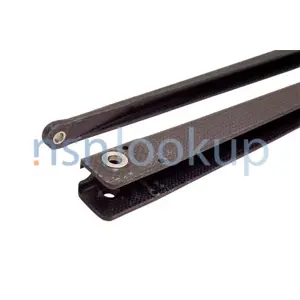Aircraft Thermal Insulation
Item Name Code (INC) 66594
 |
An item composed of ceramic or other synthetic material in various shapes and sizes. It is specifically designed to provide aerodynamic insulation for the outer skin and internal components of the aircraft against the effect of thermal heating. It also presents a low radar signature to prevent radar detection. Excludes INSULATION, THERMAL, SPECIAL PURPOSE.
 Additional Information for Aircraft Thermal Insulation
Additional Information for Aircraft Thermal Insulation
Aircraft thermal insulation refers to the materials and components used to provide insulation and temperature control within an aircraft's airframe. These insulation materials are typically installed in various areas of the aircraft, such as the fuselage, wings, and engine compartments, to prevent heat transfer and maintain a comfortable and safe environment for passengers and crew.
In the supply class Airframe Structural Components, aircraft thermal insulation can include:
1. Thermal blankets: These are lightweight, flexible, and heat-resistant blankets made from materials like fiberglass, ceramic fibers, or aerogels. They are used to cover and insulate various components, such as fuel tanks, hydraulic lines, and electrical wiring.
2. Insulation foams: These are lightweight and fire-resistant foams that are used to fill cavities and gaps within the aircraft structure. They provide thermal insulation and also help with soundproofing.
3. Insulation panels: These are rigid or semi-rigid panels made from materials like fiberglass, foam, or composite materials. They are used to insulate larger areas of the aircraft, such as the cabin walls, floor, and ceiling.
4. Insulation tapes and seals: These are adhesive tapes or seals made from heat-resistant materials. They are used to seal joints, seams, and gaps in the aircraft structure to prevent heat transfer and maintain insulation integrity.
5. Thermal coatings: These are special heat-resistant coatings applied to the aircraft's exterior surfaces to reduce heat absorption from the sun and minimize temperature fluctuations inside the aircraft.
Aircraft thermal insulation is crucial for maintaining a comfortable cabin temperature, protecting sensitive equipment from extreme temperatures, and reducing the overall energy consumption of the aircraft. It also plays a vital role in ensuring the safety and performance of the aircraft by preventing heat-related damage to critical components.